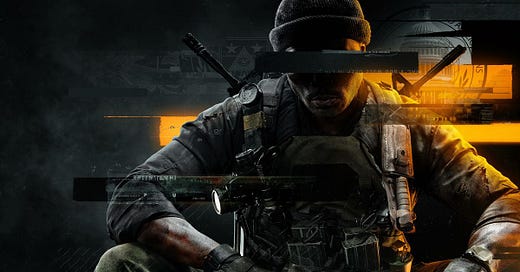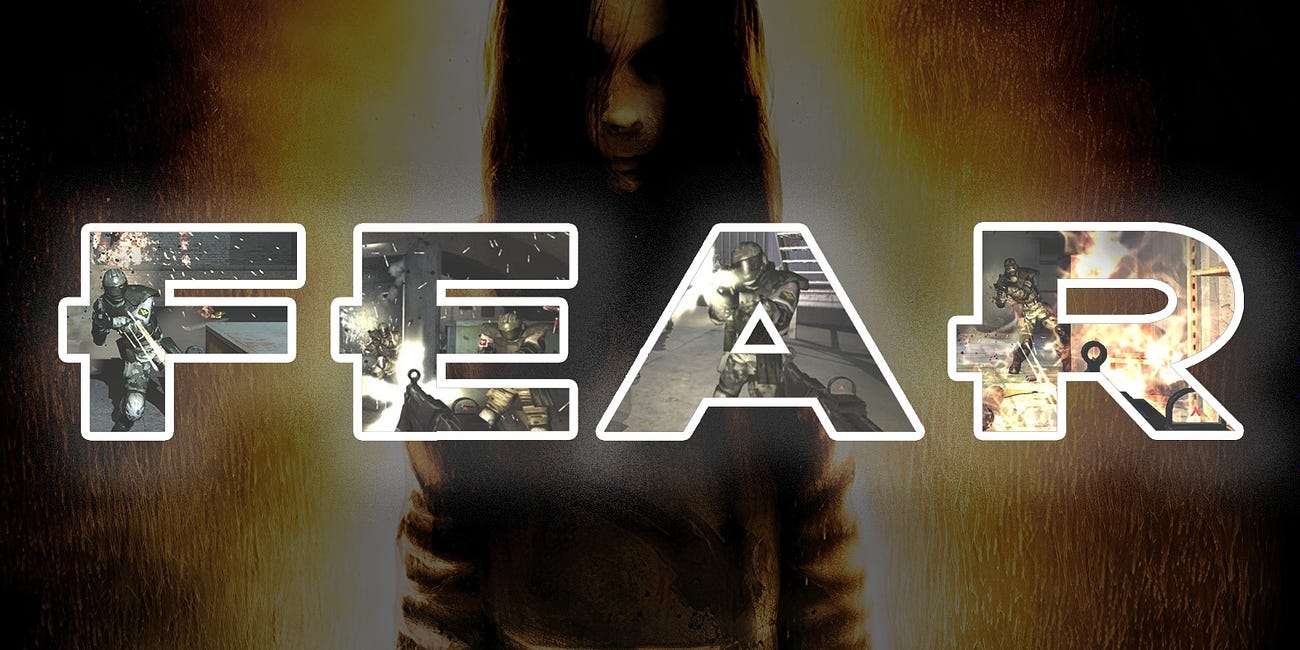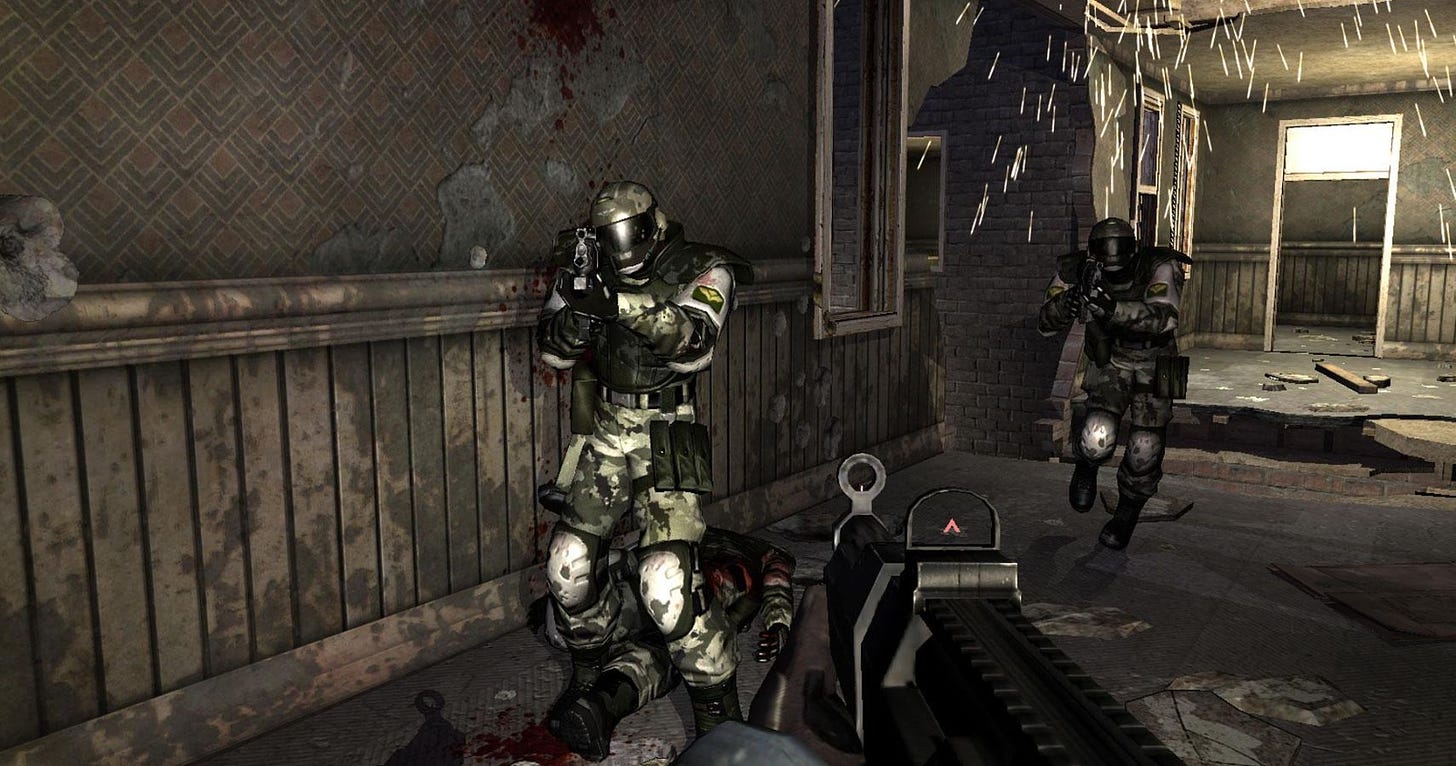Call of Duty's Impact on AI for Games | Weekly Newsletter 12/06/24
How Activision's FPS series influenced AI for games
The AI and Games Newsletter brings concise and informative discussion on artificial intelligence for video games each and every week. Plus summarising all of our content releasing across various channels, from YouTube videos to episodes of our podcast ‘Branching Factor’ and in-person events.
You can subscribe and support AI and Games right here on Substack, with weekly editions appearing in your inbox. The newsletter is also shared with our audience on LinkedIn.
Hello and welcome to the AI and Games newsletter. This week I’m in the final preparations for a whole bunch of travel, as I head off to the AI and Games Summer School and Schloss Dagstuhl for the week long seminar on Computational Creativity for Game Development. I plan on reporting back from each of these events in the coming weeks. But for this week I wanted to pick up on a point in our recent F.E.A.R. Retrospective, and give my own analysis of how popular gaming trends have inadvertently impeded progress of AI in the sector.
Weekly Announcements
It’s a quiet week, so we don’t have an awful lot to announce actually. Just a quick round-up of last weeks news:
Another reminder that Volume 2 of the Game AI Uncovered book series is out now! It’s available at all major book retailers, and you can grab it at the official Routledge publisher page. Use the code DIS20 for 20% off!
The recently announced Goal State series from AI and Games is now seeking sponsors to help bring this project to our audience. If you and your team are interested in supporting Goal State, and bringing your brand to the AI and Games audience, then message Tommy directly for more information.
Call of Duty’s (Adverse) Impact on AI for Video Games
A few weeks back, I was excited to share with you the F.E.A.R. Retrospective: an episode of AI and Games where we looked back on the influence and impact of the classic horror-laden first-person shooter developed by Monolith Productions and released in 2005. In that episode, I was thankful for the opportunity to interview Dr Jeff Orkin, who was the AI lead on the game, and built the Goal Oriented Action Planning technique which was subsequently adopted in numerous games afterwards.
F.E.A.R. - The Retrospective
Tommy sits down with F.E.A.R.'s AI programmer, Dr Jeff Orkin, to discuss the impact the game has had on the industry almost 20 years after its release.
In the closing segment of the retrospective, I had asked Jeff on his thoughts as to why F.E.A.R. continues to be held in such high regard today, almost 20 years after its original release. Jeff’s answer was considered and thoughtful, as he unpacked how the games industry has evolved in the time since. Leading to a less risks being taken in both technology and more creative aspects of game development. This was largely brought on by new business models and paradigms such as mobile gaming and free-to-play give it influenced the types of games being made and the need for more mass market appeal. As a result, it meant that a lot of games from the early 2000s were AI was a big focus have subsequently fell out of fashion.
So I thought for this weeks newsletter, I would bring my perspective to that question, and what with the recent announcement of Call of Duty: Black Ops VI coming to platforms (and notably Xbox Game Pass) later this year, let’s present my thesis:
The reason games like F.E.A.R. are still so highly regarded, is because of Call of Duty.
Now yes, that might sound bizarre, but this thesis is predicated less on the games themselves, but rather the reaction to them in market, and ties heavily into Orkin’s argument presented at the end of the F.E.A.R. retrospective. It’s a sentiment I have had for many years, and having heard Orkin’s opinion, I was interested to see how it resonated with mine.
For all of the great things that Activision’s premiere shooter franchise has brought to the industry (most notably Snoop Dogg on the TACCOM), it also had a massive impact on the way in which games were being designed. This in turn has, in my opinion, led to a de-emphasis on the intelligence of non-player characters that is arguably now coming home to roost, as players become increasingly critical of the ‘intelligence’ of non-player characters (NPCs) in games.
So let’s wind the clock back, and let me explain.
“It is the Year 2005…”
While F.E.A.R. came to market in October of 2005, the now unstoppable media juggernaut that is Call of Duty was merely in its infancy. In fact, Call of Duty 2 came to market on PC and consoles the week after F.E.A.R. was released. Now while Call of Duty 2 was certainly popular, and it was becoming clear that a major new IP was beginning to emerge in the first-person shooter market, the massive popularity of the franchise didn’t emerge until the Xbox 360 generation of consoles was in full swing, most notably with the Modern Warfare subseries emerging with Call of Duty 4 in 2007 and the again with the Call of Duty: Black Ops subseries in 2010.
As Jeff mentioned in his closing statement in the F.E.A.R. Retrospective, it’s easy now to look back on the early 2000s as a ‘golden age’ of first-person shooter innovation. For much of the 1990s most FPS titles continued to lift from the template set by id Software’s DOOM back in 1993 - in fact, for a long time we didn’t even refer to them as first-person shooters, they were often described as Doom Clones, which is undoubtedly accurate given they were often highly derivative of id’s overall ‘dungeon crawling with guns’ approach to gameplay.
Throughout the 90s FPS games had slowly began to expand in genre, style and approach with the likes of Duke Nukem 3D, Unreal (Tournament), Team Fortress, Half-Life, Thief: The Dark Project, System Shock and id Software’s own Hexen and Quake. Plus it’s worth mentioning that FPS titles were predominantly PC based due to the technical specifications required to run them - not to mention that they were the only devices with reliable internet connectivity for online play. Hence this is why games like Turok and Goldeneye 007 are highly regarded, given they were some of the first console exclusive FPS titles to really make an impact.
But the early 2000s began to see a more significant change as even more powerful processors, not to mention dedicated graphics hardware, were becoming increasingly more commonplace. It allowed for further experimentation with the format, mode and style of FPS games. Hence if you look back on the era of 2000 to 2005, we have many a title that either cemented existing IP or built entirely new ones that are still in the gaming discourse, be it Deus Ex, Counter-Strike, Star Wars Jedi Knight, Far Cry, DOOM 3, Half-Life 2, Halo: Combat Evolved, and Return to Castle Wolfenstein.
A big part of these games for me personally is that there was a lot of experimentation with how smart and engaging gameplay systems could be through use of simple or complex AI. I am often asked in interviews and talks to list important titles in AI for game development - be it due to their technical nuances or iterations on design - and quite often I will mention numerous FPS titles from the late 90s and early 2000s:
Games like Thief: The Dark Project and Deus Ex helped establish games where stealth and avoiding combat is a valid tactic, and non-player characters (NPCs) must respond in kind.
While Goldeneye 007 also explored stealth systems, it also helped introduce systems that react to the player ‘going loud’. Creating systemic gameplay moments of organised chaos. A notion that the Far Cry franchise has embraced wholeheartedly.
The Half-Life franchise showcased how to create not just emergent play through exploiting physics systems, it also crafting memorable story sequences with intelligent NPCs. It set a new standard for designing Finite State Machine (FSM) AI that was later embraced by many a subsequent title.
Quake III Arena’s ‘area awareness’ system more or less defined what we now consider ‘navigation meshes’ in game engines.
The Halo franchise consolidated the idea of ‘Behaviour Trees’ for decision making as an alternative to the FSMs seen in DOOM, and Half-Life, which is now the default AI tool in Unreal Engine.
Plus of course, F.E.A.R. introducing the Goal Oriented Action Planning method - the first adoption of planning AI in video games.
Now while my argument is Call of Duty had an impact on this progression, it equally contributed to this process. In fact in my AI 101 episode on ‘bark systems’ - gameplay systems that help communicate to the player what’s happening through dialogue - I pointed out that Call of Duty 2 set the standard for this idea to be adopted in shooter titles.
The Call of Duty Effect
Now an undercurrent that is running through everything I have discussed thus far is the growing interest and excitement for multiplayer in FPS games. While this was baked into PC gaming as early DOOM in 1993, it was always the single player experiences that drove interest - and later sales - given the market was largely console based. Hence I can look back and list those seminal titles of late 90’s and early 2000’s as being highly influential on the field.
But the single player element was often due to the form factor and capabilities of the console hardware. Consoles of the era such as the early PlayStation models, the original Xbox and Nintendo 64 and GameCube never had the same technical capabilities as their PC compatriots, and as such they often had slimmed down options in terms of multiplayer. There were a few outliers that started to trickle through from PC to console, notably the likes Quake III Arena and Unreal Tournament which were built with strong online multiplayer focus even when the console online infrastructure wasn’t ready to support it - with arguably only the Sega Dreamcast bringing anything close to what was happening in the PC space. Plus some console IP built in offline multiplayer components that players loved such as Timesplitters and Halo - the latter of the two later helping establish online play on consoles courtesy of Xbox Live. But for the majority of console games the emphasis was on ensuring the single player was still the main selling point. And that’s when Call of Duty flipped the situation on its head.
Call of Duty 4: Modern Warfare is undoubtedly the true turning point of the series. The point where Call of Duty transitioned from a popular FPS series to a massive IP and brand. But it also was the moment where the multiplayer component of these games became significantly more important than the single player for the console audience. Modern Warfare was one of the first console games where the majority of players were invested largely, and often exclusively, in the multiplayer mode.
This led to a fundamental change in how first-person shooters, and similar big budget actions games were built. When we now consider the process behind marketing most popular first-person shooter franchises, the big priority is showcasing the multiplayer, and that’s assuming that the game even has single-player modes at all - an idea that would have seemed insane but a decade prior.
It’s hard to forget that this switch towards multiplayer as the primary focus had a big impact not just on Call of Duty, but the broader industry. Numerous games released during the Xbox 360/PlayStation 3 era launched with a stronger emphasis on online multiplayer, even when they were built atop IP that were known for their single player content.
The notion of ‘tacked-on multiplayer’ became a trend for many years, with games like Splinter Cell: Blacklist, Assassin’s Creed: Brotherhood, Far Cry 3, and even The Last of Us and Uncharted having rather lacklustre experiences. Spec Ops: The Line, BioShock 2 and Dead Space 2 had multiplayer modes that seemed rather antithetical to their core experience. Meanwhile Mass Effect 3 carried a multiplayer mode that was largely well received but was teeming with microtransactions.

This latter point is perhaps the most crucial, in that Call of Duty had changed the paradigm around games ownership and of how publishers could further monetise players through in-game purchases and expansions. Many games now came with multiplayer modes as a mechanism to increase sales. Hoping that by bundling in a multiplayer mode, it would prevent players from buying day one from retailers such as GameStop and trading it in a week later once the game was completed. By encouraging repeat play, and minimising those trade-ins, it would reduce the amount of second-hand stock that retailers had available to resell with higher profit margins: a business practice that denied the publisher their cut of a ‘new’ sale (and even led to the ‘Project Ten Dollar’ initiative by EA). Of course the majority of these multiplayer modes failed to stack up, and seldom achieved the longevity of a Call of Duty title. And now in 2024 most of these multiplayer modes are dead, not just in terms of playerbase but the servers were shut down years ago.
With online multiplayer proving to be the major selling point of Call of Duty with each subsequent release, we began to see not only an increase in unnecessary multiplayer components, but equally a trend where other games began to de-emphasise single-player modes, or even removing them completely. The Battlefield franchise, EA’s competitor to the Call of Duty, first opted away from further entries of its Bad Company series - known for its strong single player content - with the campaign modes in successive titles becoming nothing more than a tutorial of key mechanics you would later use online. Meanwhile popular first-person shooters such as Overwatch and Titanfall released without a traditional campaign mode. Though it’s worth saying Titanfall 2 learned from this lesson, and released what is arguably one of the best FPS campaigns ever. Even Call of Duty itself finally fell prey to this idea, with Black Ops IV being the first entry in the series releasing without any meaningful single player content.
This de-emphasis on single-player content, I would argue, led to a lack of investment in finding new ways to build intelligent AI for games. Given, as Jeff himself said in the retrospective, we couldn’t afford to be more experimental. Instead, given the time and budgetary constraints (yes, even at AAA level), teams were more reliant on established practice. So while we still had some FPS games and franchises crop up that placed emphasis on AI, it was almost always in stealth games like Dishonored, or franchises like Far Cry and Crysis which was about player empowerment amidst structured chaos. While I can still to this day pull up that list of late 90s/early 00’s FPS titles that influenced AI in the industry, the subsequent list for titles in the late 2000s and early 2010s is painfully slim.
Campaign Quality
But of course a quick counter-argument to this is that, Black Ops IV aside, all of Call of Duty’s annual releases have a single-player campaign mode, in which players fight against waves of enemy non-player characters controlled using AI methods.
But I would argue this doesn’t really hold up to scrutiny, given nobody ever really celebrates Call of Duty campaign missions for their intelligent AI systems. Enemy AI in Call of Duty aren’t really built to showcase intelligence in any meaningful way. The franchise is know for it’s low time-to-kill (TTK) - the time it takes for an enemy to be eliminated by the players weapon - and often enemies are merely cannon fodder as part of the campaigns larger cinematic experience. Funnily enough one of Call of Duty’s competitors, Halo, discovered through player research that characters will appear more intelligent by giving them a higher TTK, given it provides players more opportunities to see them act in smart and interesting ways.
And this speaks to the crux of the issue: the Call of Duty franchise is known for its ‘Hollywood Blockbuster’ approach to story telling. Each campaign will have a handful of memorable moments, be it ‘Vorkuta’ in Call of Duty: Black Ops, or ‘All Ghillied Up’ in Call of Duty 4: Modern Warfare, but more often than not they’re heavily scripted and designed not to give any of the enemy (or ally) NPCs any sort of means to express themselves in fun and interesting ways during gameplay.

This isn’t to say these campaigns are bad. I have personally enjoyed many entries of the series to varying degrees* over the years. In fact I think outside of the Modern Warfare subseries, Call of Duty: Infinite Warfare has one of the most interesting campaigns of the series, even though the fanbase largely rejected it.
*As a point of principle, I actively avoid shooters that seek to re-enact real world conflicts, given I find that morally questionable. A point I explored a few years ago in an episode of my ‘Design Dive’ video essay series.
But the point of these campaigns is to deliver player empowerment in very measured and precise ways, either by surviving bombastic sequences, sneaking through rather linearly designed stealth missions, or just fighting through waves of enemies spawning at key points to deliver that cinematic vibe. I’ve never played a Call of Duty title where I thought that the one-to-one combat with an enemy NPC in the campaigns is an exciting and intense experience.
Let me stress that this isn’t to say that Call of Duty’s AI hasn’t continued to evolve and improve. We had a great talk from Andrew Hoyt at this years GDC discussing boss AI for the ‘zombie’ modes of several entries in the series. But I found that there has been in general a lack of innovation in what we’re seeing in enemy AI behaviour from what is undoubtedly still the biggest FPS franchise on the market.
Answering the Call (of Duty)
But is this perhaps the last year where I can make this assertion? Just last weekend during the Xbox Showcase, Microsoft and Activision announced the latest entry in the series: Call of Duty: Black Ops VI. For me what was the most interesting point made during the presentation was the promise of smarter and more intelligent enemy characters.
During the Call of Duty: Black Ops VI Direct, lead mission designer Justin Negrete from Raven Software highlighted that a goal for this years entry was to enable for more interesting challenges for players. Allowing players to tackle missions in different ways, and then having the AI account for it. To quote Justin directly from the video:
“Your enemies will be relentless, constantly seeking to outmanoeuvre you throughout the levels. They’ll cut off escape routes, push on player’s location, and force them to think on their feet.”
Naturally, I’m a little sceptical - it’s not the first time a feature in a game runs risk of being oversold - but Raven have an established history of being solid game developers, and I’m excited to see how all of this comes to pass in this years entry.
Wrapping Up
And so yeah, that’s my musings on Call of Duty, and how the impact its had on my little corner of the games industry. With that, I’m going to retire for the week. In fact, this time next week I’ll be at the AI and Games Summer School in Malta, so our newsletter will be a little less dense. But fingers crossed I’ll be releasing the latest case study episode of my main AI and Games YouTube series, and this one is killer! I’m looking forward to sharing it with you.











